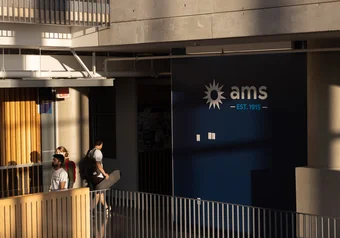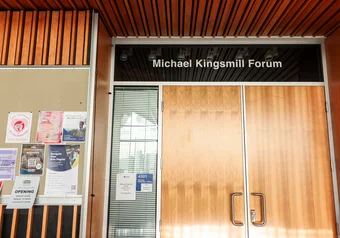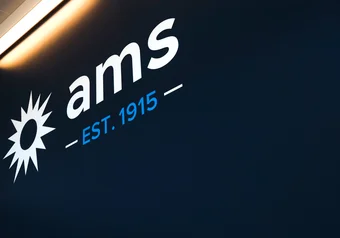Last night, AMS Council met for the first time since the end of the 2023 AMS Elections. AMS Elections Administrator Max Holmes made recommendations to increase turnout in future elections and President Eshana Bhangu spoke about ways to increase executive oversight.
Here’s what you may have missed.
Grad students exhibit low turnout during AMS Elections
In a presentation to Council, Holmes outlined what the Elections Committee thought went well with this year’s elections, and what could be improved.
This year, AMS Elections garnered 22.9 per cent voter turnout, falling just short of Holmes’ goal of a 25 per cent turnout.
Holmes presented preliminary data on voter turnout of various AMS constituencies — arts and science undergraduate students had the highest turnout of just over 29 per cent each, while Graduate Student Society (GSS) turnout was only 16.8 per cent.
Holmes said the 16.8 graduate student rate was the “main reason” why the AMS fell short of its aim. He also said that if voting had been extended a few more hours on the last day and voting rates stayed consistent, the goal would have been met.
In terms of places to improve, Holmes said that there was a slow start in the process of candidate and referendum postering. He also recommended changing the hiring timeline of the Elections Committee structure to give more time for training.
Though every race was contested to start, Holmes noted that two races, VP academic and university affairs and VP external, ended up uncontested due to candidates dropping out. He said he hopes to improve the education process for first-time candidates to avoid similar race dropouts in the future.
“I think the more that we can do to help people [learn] about how to run an elections will help boost turnout,” he added, noting that these informational sessions will centre on how to effectively engage with students and win elections.
This year’s coffee and tea polling stations brought in 2,500 to 3,000 student interactions, according to Holmes. Next year, he hopes the Elections Committee increases the number of polling stations to improve the turnout rate.
Holmes also noted that the “email blasts” were a key factor in the increased turnout rates.
Bhangu discusses governance committee recommendations
Bhangu also presented on several recommendations from the ongoing internal governance review, including a new oversight committee and more accountability for exec goals — which she said will be approved at a future Council meeting .
Some changes have already been approved during this year’s AMS Elections, including changes to Council structure. Moving forward, there will be one representative for students at affiliate institutions and three representatives for arts, science and the GSS — from five, five and one respectively.
Bhangu said another recommendation was to create an executive oversight committee, responsible for holding executives accountable for their goals.
The committee will have seven members, including a non-executive chair — although the committee is still being discussed, so membership could change. The HR department will be responsible for facilitating the gathering of feedback for executives to account for possible political biases. The information will be presented to Council both in-camera and in public sessions, factoring in HR considerations.
Following the presentation, Speaker of Council Neal Cameron asked how the committee itself would be held accountable, which Bhangu said would be discussed in future meetings.
Bhangu also said the governance review showed a need for more accountability around executive goals. In the future, there will be “target timelines” tied to campaign promises, including monthly updates.
Following the bylaw referendum, new ways of removing an executive from their position will soon be constructed. Preliminary guidelines include an anonymous ballot or the prevention of executives voting on the removal of another to avoid conflict of interests.
Share this article
First online





